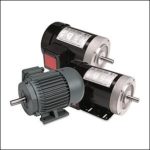Whole body vibration therapy in high blood pressure patients
If you smoke, suffer from diabetes or are overweight and have elevated cholesterol levels, you’re more likely to develop high blood pressure. However, people who have an active lifestyle and a healthy weight can also suffer from this condition, the potential causes and risk factors of high blood pressure being numerous.
Blood pressure in itself is not a medical condition, but a measure of the force of blood that pushes against the blood vessels walls. The blood is carried throughout the body via arteries and veins, so whenever the heart pumps blood into the vessels, there’s a certain force pressing on the walls.
The normal values for blood pressure are around 120/80, where 120 defines the systolic pressure, and 80 the diastolic pressure. Values that exceed 120/80 and go up to 139/89 are considered pre-hypertension, while values over 140-150/90-99 are considered high blood pressure (stage 1). Also, anything that’s above 160/100 is considered stage 2 high blood pressure.
These values can slightly vary in older people, or in kids, compared to adults. Also, they might be slightly different in professional athletes. High blood pressure tends to run in families and is more common in men. It can affect people aged 40 and above, but is more likely to be present in adults and seniors over 65 years old.
Talking about causes, except for age, genetics and family history, hypertension can also be the result of long-term smoking, of excess weight, of eating too much salt, drinking too much alcohol, or having a completely sedentary lifestyle. People who have stressful jobs, as well as those who suffer from thyroid disorders, chronic kidney disease or sleep apnea are more prone to developing high blood pressure.
Hypertension can become dangerous and even life-threatening if left untreated, as it can favor the hardening of blood vessel walls and the development of atherosclerosis, as well as other conditions like kidney disease, or even stroke and heart failure.
Increasing the level of physical activity you do every day can be effective in keeping your blood pressure in normal limits. Scientific evidence shows that 30 to 60 minutes of exercise, three-four times per week can significantly decrease the values of blood pressure, being just as effective as medications in some sufferers.
Effects of vibration exercises in people with high blood pressure
Since whole body vibration was found to exert effects similar to conventional strength exercise in healthy adults, scientists wanted to see if this form of training is also suitable for hypertension sufferers.
Iranian researchers from the Farhangian University investigated the use of WBV in patients with high blood pressure, results of their study being published in the International Journal of Sport Studies. They wanted to determine whether vibration training performed for 1 month has any effect of blood pressure, three months after the intervention.
For this study they recruited 9 inactive women aged 40 to 53 years, participants performing 11-17 minutes of WBV at 25-35 Hz, done in one session per day. The blood pressure was measured after 1 month and after three months, results showing no significant difference in the investigated parameters. The researchers concluded that WBV doesn’t have the potential to reduce blood pressure in middle-aged, inactive women, so it’s not a good substitute for exercise in this case.
On the other hand, US researchers from The Florida State University found that exercising on a vibrating machine can reduce arterial stiffness and decrease cardiovascular risk in postmenopausal women with hypertension. Their study was published in the journal Menopause and investigated the effects of vibration workouts on arterial stiffness, blood pressure and leg muscle function in 35 women with hypertension or prehypertension.
Participants performed whole body vibration exercises for 12 weeks, and results showed a decrease in blood pressure and an increase in muscle strength in the WBV group compared to the control group. It was concluded that vibration machine training improves systemic and leg arterial stiffness and blood pressure, enhancing muscle strength in postmenopausal women with higher than normal blood pressure.
Researchers from Taiwan obtained similar results when investigating the effects of vibration therapy on cardiovascular disease risk factors, in middle-aged and older adults. A total of 38 adults joined this study and were divided into a WBV and a control group, each of them performing specific exercises for 3 months. The vibration therapy group was exposed to WBV at 3.2 G’s and 30 Hz, doing standing exercises.
The results showed that after three months there weren’t significant changes in blood pressure or heart rate in either of the groups, but the arterial stiffness was lower in the vibration group. Scientists concluded that WBV has positive effects on arterial stiffness and can be a safe supplementary exercise for adults and elders.
Have something to add to this article? Comment below or join our Facebook community and share your thoughts with us.







